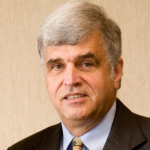There has been considerable discussion in recent weeks about the proposed California High Speed Rail (HSR) project. The taxpayers of California are being subject to grandiose claims about reduced traffic congestion and cost-effective alternatives to flying and driving.
The system, which would connect Los Angeles, San Francisco, San Diego, Sacramento, and areas in between, would require as a down payment a $10 billion bond issue that voters will consider in November. The California High Speed Rail Authority admits the system could cost much more–$37 billion–but the truth is likely to be more like $75 billion.
Luckily for taxpayers, the Assembly has passed a bill that would delay the bond issue until 2008. That bill is now in the Senate Appropriations Committee and there is no clear indication whether it will come to a vote any time soon. However, there is evidence the Assembly’s caution is justified and that the Senate should follow its lead.
First, the HSR system is likely to cost much more than advertised. Cost projections for large transportation projects are notoriously inaccurate. Boston’s “Big Dig” racked up three times its projected cost, even after accounting for inflation. Across the country, transit megaprojects have escalated in cost after approval; these are not isolated cases.
What’s more, it appears this is no accident. Research by Bengt Flyvbjerg of the University of Aarlborg (Denmark) published in the Journal of the American Planning Association, demonstrates these projects routinely surpass estimated costs due to “strategic misrepresentation.” Planners and proponents underestimate costs in hopes of obtaining project approvals that would otherwise be impossible.
As a commissioner on the Los Angeles County Transportation Commission, I witnessed costs escalate for the Los Angeles to Long Beach Blue Line, eventually exceeding three times original projections (inflation-adjusted). At no point did anyone seriously question the increases, because the taxpayers had already committed to the project. There was simply no incentive to keep costs down. Why should we expect the HSR project to be any different?
Underestimating costs is just the beginning. Flyvbjerg and others have also found ridership estimates tend to be overstated. For instance, even today the Los Angeles Red Line subway carries less than one-half the ridership that was projected when we approved it. The London-to-Paris high-speed rail line has never carried even half the ridership that was projected to justify it.
Ridership is important because the California high-speed rail system is advertised as not needing taxpayer subsidies for operations. But this claim is likely based on an overestimation of the ridership and an underestimation of the operating costs. Amtrak’s high-speed Acela service between Washington and New York City carries little more than one-tenth the number of passengers that proponents promise for the California system, despite serving a larger market. So it is likely taxpayers will need to keep their checkbooks open indefinitely to subsidize HSR operation.
All this would be irrelevant if we needed such a system. The California HSR has been touted as a strategy for reducing highway congestion. But, in fact, projections indicate traffic congestion along the rail corridors will still increase 26 percent by 2020, even with high-speed rail. Without high-speed rail, the increase would be only slightly higher–31 percent.
Claims of air traffic congestion relief are similarly flawed. Most air travel between the San Francisco Bay Area and Southern California already avoids the busy San Francisco International and Los Angeles International Airports, and their share of travel is declining. Planners delude themselves into believing HSR will take away one-half of air traffic volumes. But last year Amtrak said its high-speed Acela service between Washington and New York actually lost ridership to stronger airline competition. Planners make a mistake assuming airlines will stand idly by as their customers jump on the train. They will compete, and compete hard.
Much has been made of HSR’s purported cost-effectiveness, with claims that highway improvements would cost more than twice as much. But important differences are glossed over in the news releases and media coverage. The highway alternative would produce four times the congestion relief, making it twice as cost-effective, even without the inevitable high-speed rail cost escalation. Moreover, the highway improvements will be required, with or without high-speed rail, to maintain California’s competitiveness.
Thus, for the state of California, the question is not whether high-speed rail would be nice–it would be. The fundamental question is whether it is worth the $37 billion, $75 billion, or even $100 billion it could cost. We have to put this project in the context of other needs and priorities faced by the state. At this point, there is every reason to believe this project would be, quite simply, a waste of money.
Wendell Cox ([email protected]) was appointed to three terms on the Los Angeles County Transportation Commission by the late Mayor Tom Bradley and served from 1997 to 1985. He is a senior fellow of The Heartland Institute; a consultant to public and private public policy, planning and transportation organizations; and a visiting professor at a French national university. He also was appointed to the Amtrak Reform Council by Speaker of the House of Representatives Newt Gingrich.




